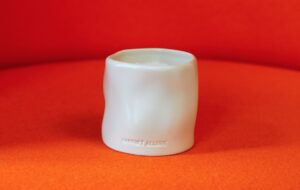|
|
||
|
High-visibility clothing is the closest thing 21st-century Britain has to a national costume High-visibility clothing is the closest thing 21st-century Britain has to a national costume. Policemen, emergency services, construction and transport workers, young offenders doing community service, children on their way to school, ravers, cyclists, bus drivers, hauliers, surveyors, traffic wardens, nearly everyone whose job involves going outside – all these professions and people get decked up in high-vis gear. It has risen to ubiquity in the past 20 years despite being something few people would choose to wear. It is the summit of functional clothing, completely outside fashion, with its aesthetics and even its wearability enslaved to its purpose: being seen. And despite this single-minded purposefulness, it has experienced an inversion, a kind of conceptual collapse: it has become invisible. Most high-vis clothing has two parts: a fluorescent yellow or orange body, to which is added the all-important “retroreflective” strips, which bounce light back to its source – the headlights of an oncoming vehicle, for instance. The most common forms of garment are a flimsy, sleeveless vest or tabard, or a bulkier jacket. It was first used by Scottish railway workers in 1964. Track-side work was becoming increasingly dangerous as quieter, faster electric and diesel trains supplanted steam engines, and “firefly” jackets gave drivers some warning of men on the line, giving them time to sound the horn. Sadly the name “firefly” failed to stick, but the bright stuff was on the way to becoming an emblem of modern Britain. The ascent of high-visibility clothing matches the steady rise of “health and safety” culture in the UK. From the railways, it spread across the transport and construction industries into the emergency services, and was required by law for many jobs in 1992. It spread along the roads, appearing in the uniform of any job or activity involving being near cars – on the buses, on traffic wardens, on cyclists, on surveyors, on children with safety-conscious parents. It has even penetrated the office: a tabard draped over the back of a chair is a dubious status symbol, indicating a fire marshal. This, the mid-1990s, was the gleaming apogee of high-visibility clothing. “Blue-collar” was now mostly “fluorescent-yellow-collar” as high-vis gear had covered most manual, non-office jobs. At its moment of triumph, it was adopted by the counterculture, worn by ravers as part of their enthusiasm for all things day-glo, particularly valued for the stunning effect of strobe lights and dancehall lasers on retroreflective strips. For one brief, passionate moment, it was aligned with something resembling fashion – it was, at least, popular, desired, valued for something other than its utilitarian contribution to safety. Its ubiquity was symmetrical: the police and private security firms who broke up the parties also wore it. But come the late 1990s, rave was dead and the high-vis jacket (always something of a chameleon) was changing its meaning. Writing about the construction of the Millennium Dome, Iain Sinclair was quick to spot the new symbolism of “security men in scrambled-egg vests”. He included the “tweetie-pie waistcoat” as an essential element in a certain kind of propaganda image: men in hard hats, smiling and wielding brand-new shovels as they break ground on some project. High-vis tabards over sharp suits, businessfolk and politicians project the message: “Britain is working. Hands-on management. Optimism. Good humour.” The money shot of the neoliberal public-private enterprise. As the Blair project rolled on, another section of society found itself in high-vis: from 2008, young offenders doing community service have had to wear fluorescent orange tabards to identify them. And then high-vis clothing pulled off its greatest trick: it disappeared. Signifying no particular profession, it conveys very little information about its wearer beyond “I am working”. Photographers and activists swear by the high-vis vest as a way of avoiding the attention of the police. And criminals don’t just wear them after they’ve been caught: scrap-metal thieves routinely wear the vests to pose as workmen, and the robbers in the 2006 Securitas depot robbery, the biggest cash heist in British history, wore high-vis jackets. It has sunk into the visual background noise of our culture – high-visibility gear is a modern invisibility cloak. |
Words William Wiles |
|
|
||


















